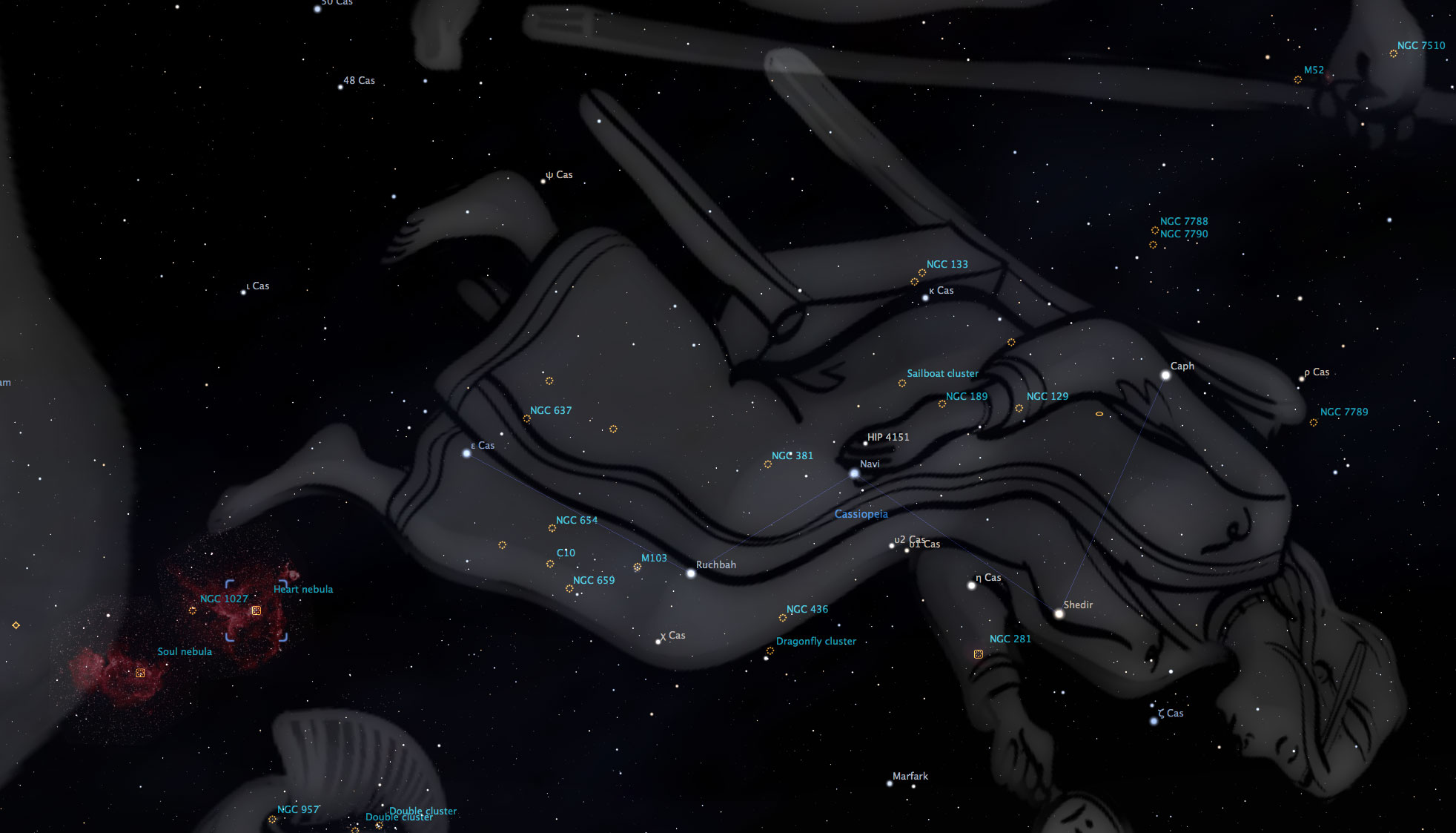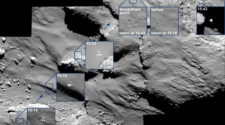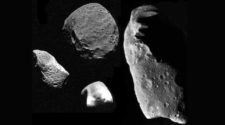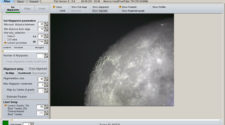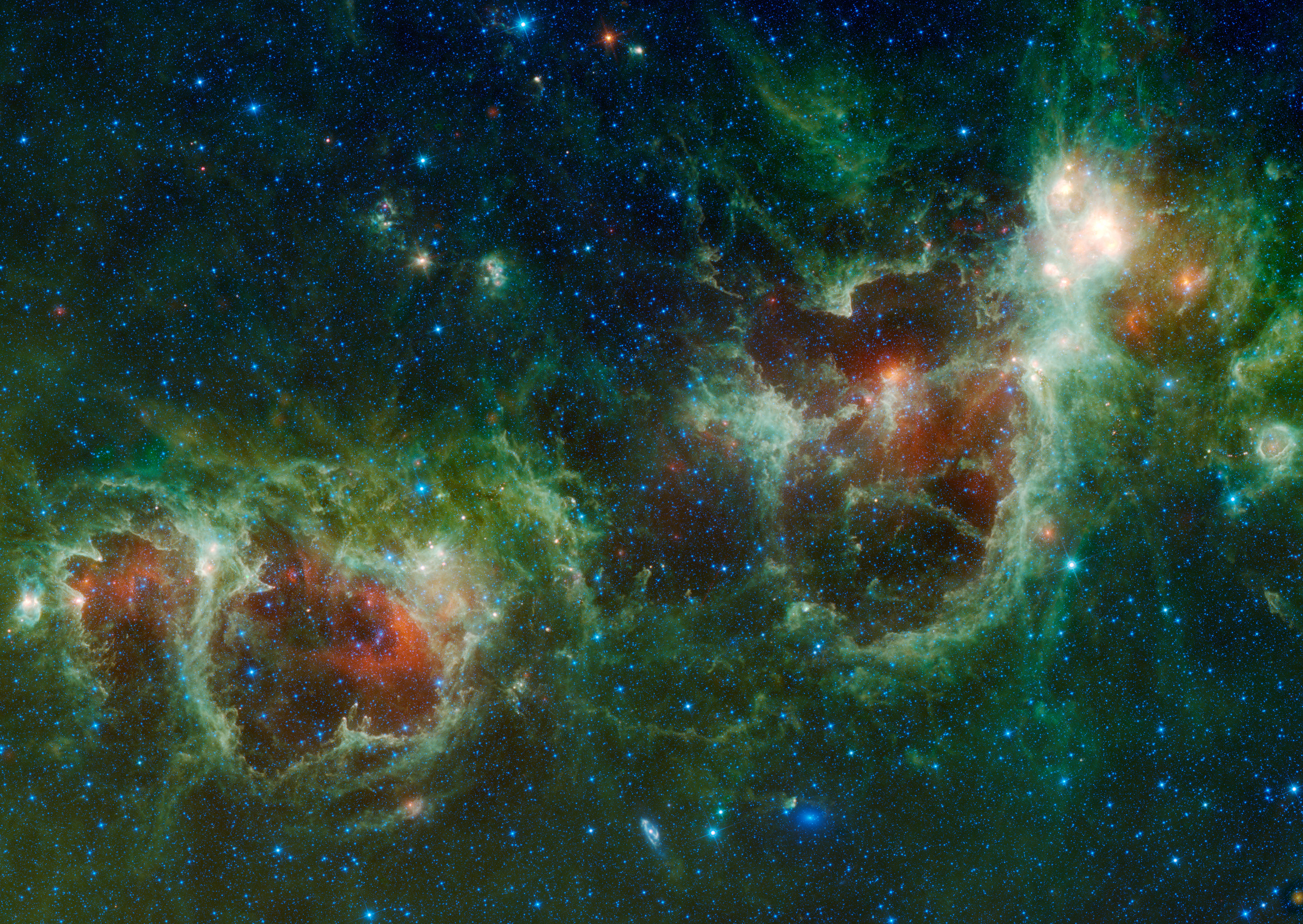
Cassiopeia is a prominent constellation in the northern hemisphere which is very easily recognised as a W or M in the night skies. In most of Continental America and all of Europe it is visible year round but becomes most spectacular in the winter months, when it is elevated to a much higher altitude.
Along with The Plough (Ursa Major) The Queen (Cassiopeia) is one of the first constellations that is learnt in the heavens above. The five main stars of the constellation are quite similarly matched varying from magnitude 2.15 to 3.35 making it very easy to pick out, especially from a light-polluted site or when the moon is shining brightly.
Cassiopeia lies within the main band of the Milky Way. From a very dark viewing site, when there is no Moon the millions of stars forming the star field of our galaxy can be seen as a wispy cloud. Using binoculars pulls a lot of the faint stars into detail, and you will suddenly see a mass of stars popping out of the background stellar clouds. Moving up to a telescope will reveal many more stars and the beauty of the region. In fact, with binoculars and telescopes so many stars can be seen that it is difficult to navigate around the constellation.
As you would expect with an area in the Milky Way there are lots of deep sky objects to be seen and imaged. Most of these are quite dim and will require binoculars or a telescope to see. Some, though spectacular, are not visible to the eye but reveal themselves with deep sky photographic techniques.
The open star clusters of M103, NGC 7789, and M52 are easy to find and delightful to view. There are also: NGC 457, the Dragonfly Cluster; NGC 225, the Sailboat Cluster; NGC 663 or Caldwell 10; and many other smaller and fainter star clusters
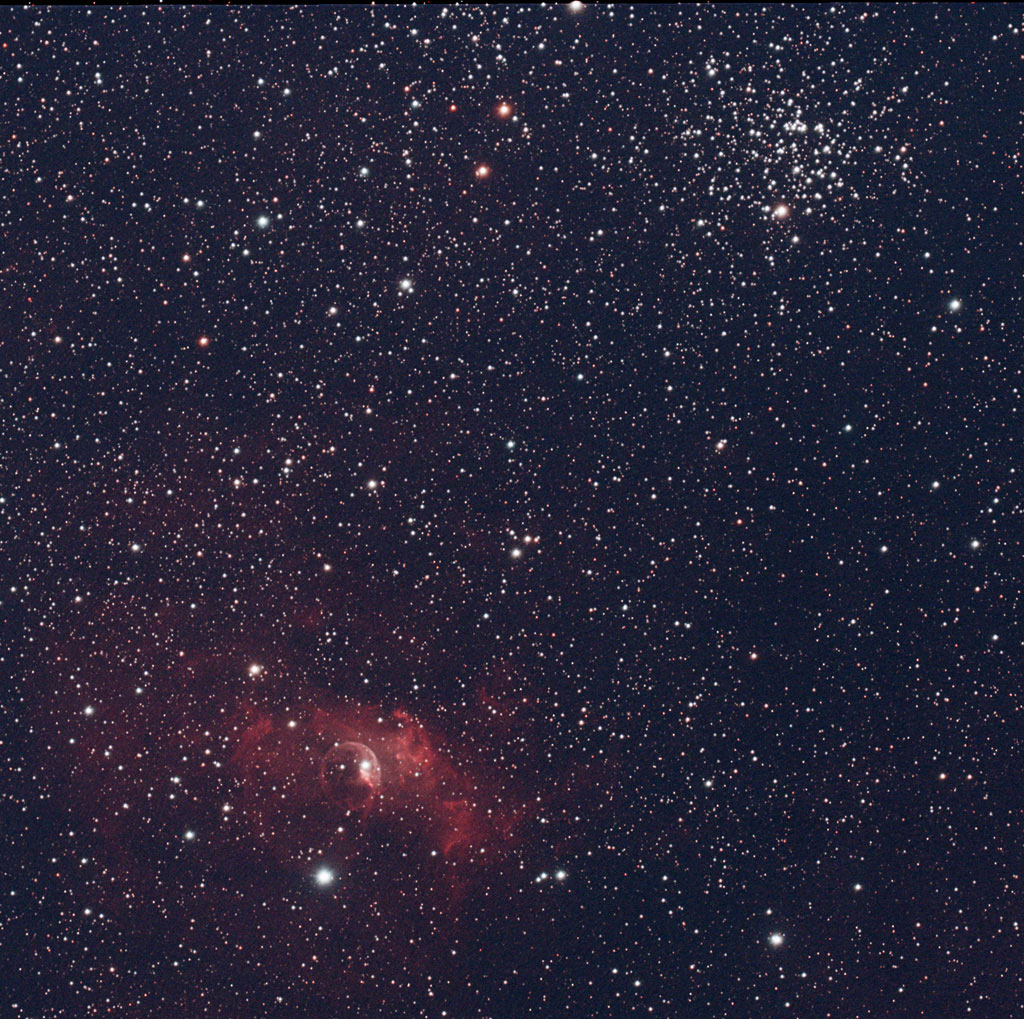
M52 is the easiest to locate as you just follow a line up from the two rightmost stars of the ‘W’ and continue on about the same distance. With a modest 3-4” telescope you will be able to see a lot of hot, blue stars and a few older, cooler yellow stars.
Switching from an eyepiece to an image sensor you can start to explore the deep sky objects of the constellation. Just below M52, and in the same field of view in a 3” telescope, is NGC 7635, The Bubble Nebula. The Bubble Nebula is a hydrogen emission nebula that has a cloud of hydrogen gas, with the bubble forming a shell in the centre of the gas cloud.
Moving to the opposite end of the constellation are two very large hydrogen emission nebula named the Heart and Soul Nebula. These are supposedly visible through a telescope, but I have never seen them. They are also huge, spanning an area 10 times wider than the Moon and eight times as high.
The best way to see this pair is by using a camera. The problem with that is that the light they emit is in the far red area which traditional cameras cut off, along with Infrared light. So the ideal way to photograph them is using a modified camera with a normal lens. I have found that a 200mm lens just about fits them in frame, but you have to be very careful with the framing.
NASA has an Infra Red telescope in orbit called WISE. This camera created a false colour image (see image at top of post) by sampling light using a number of narrow band filters and assigning colours to them. As you can see this creates an image vastly different to the normal red nebula or Hubble palette images.
